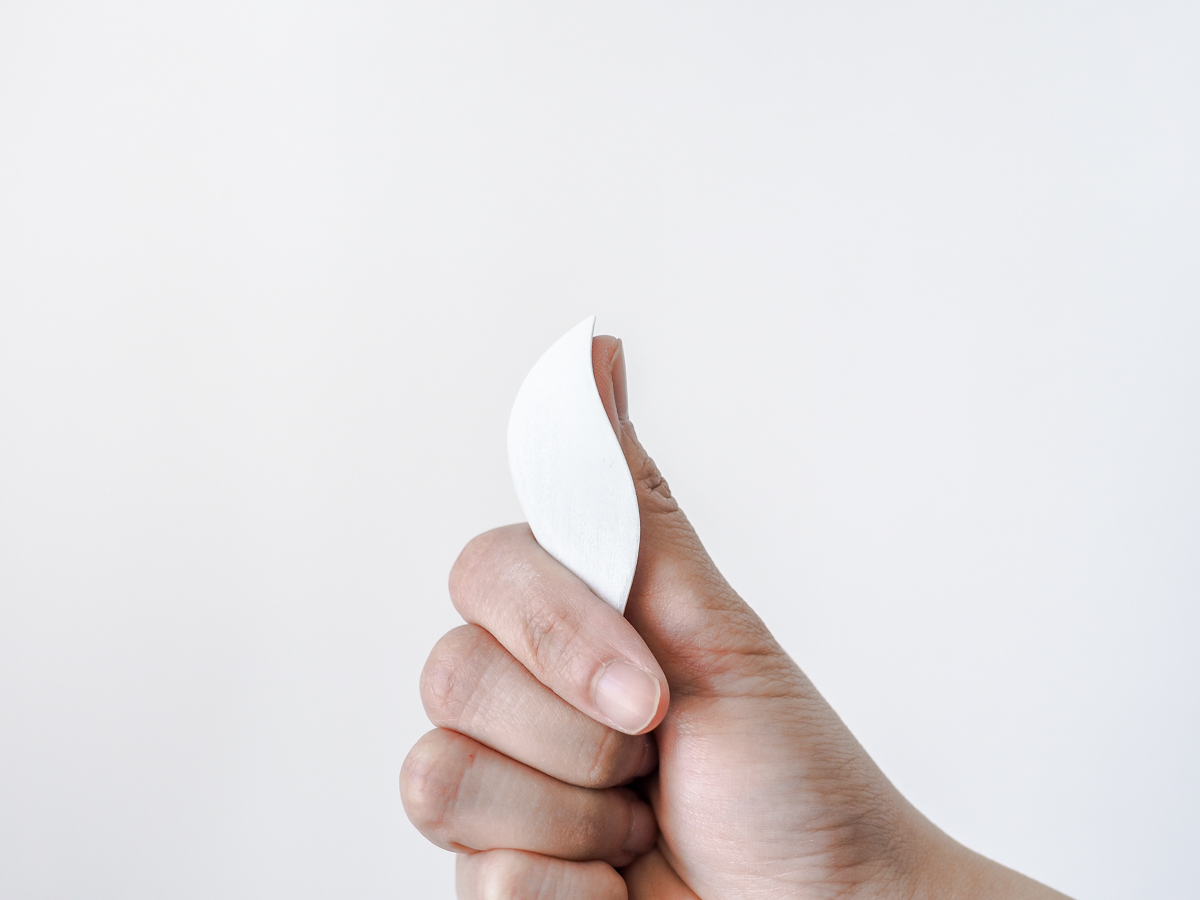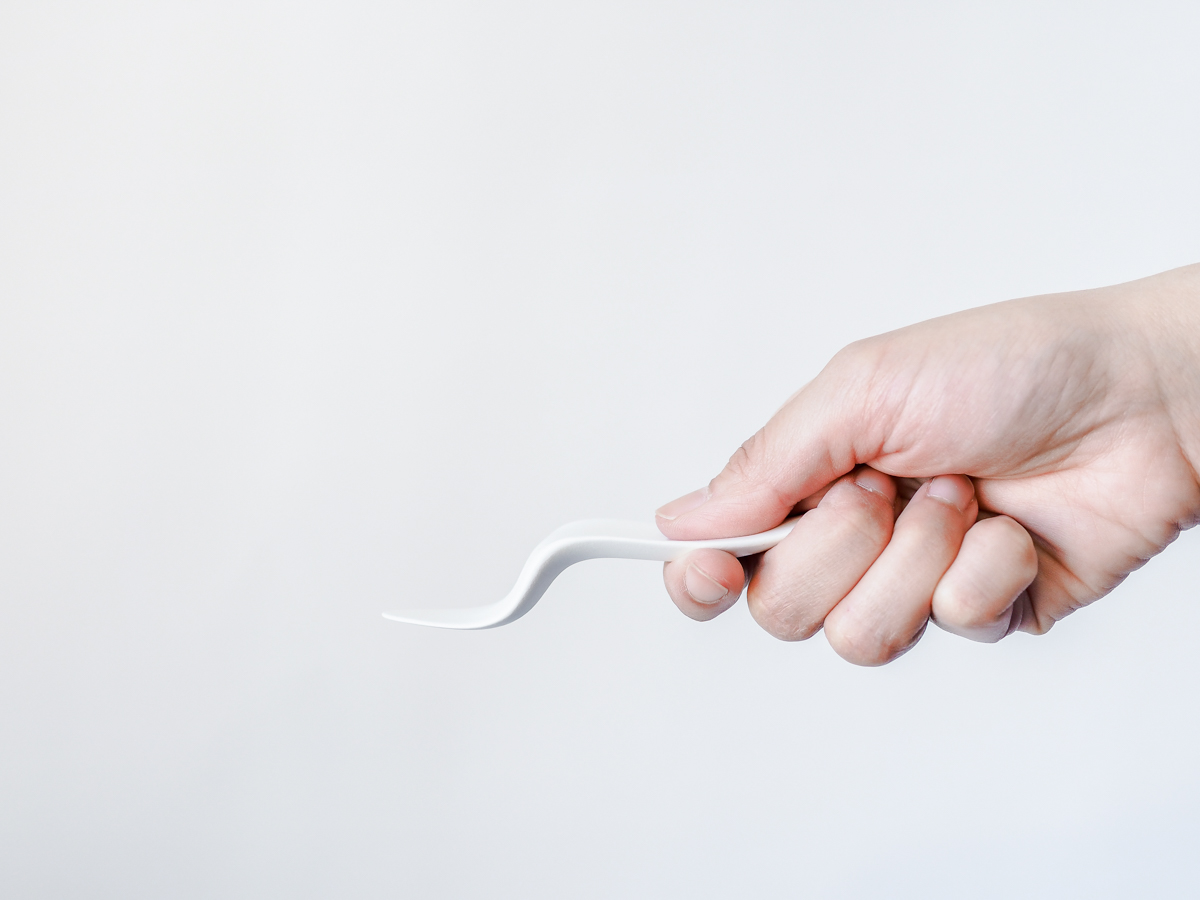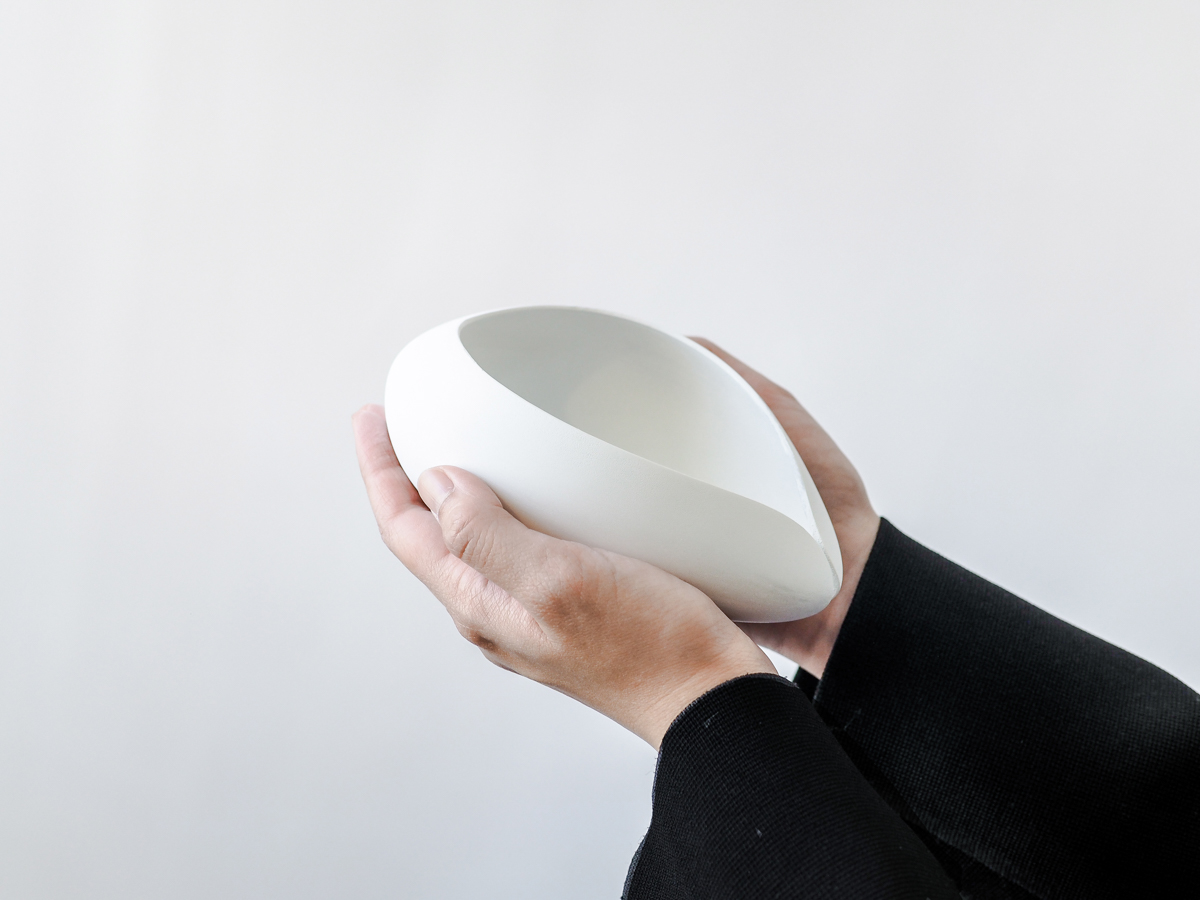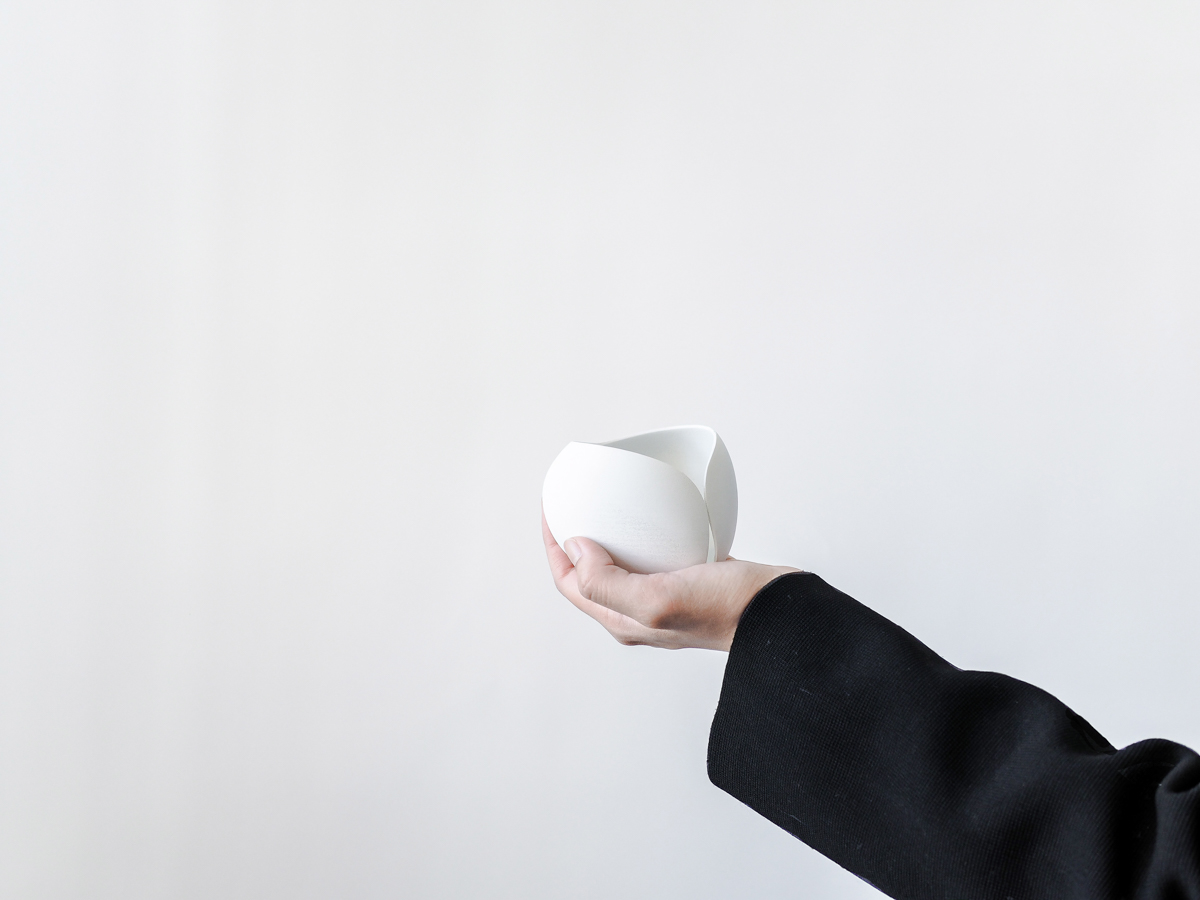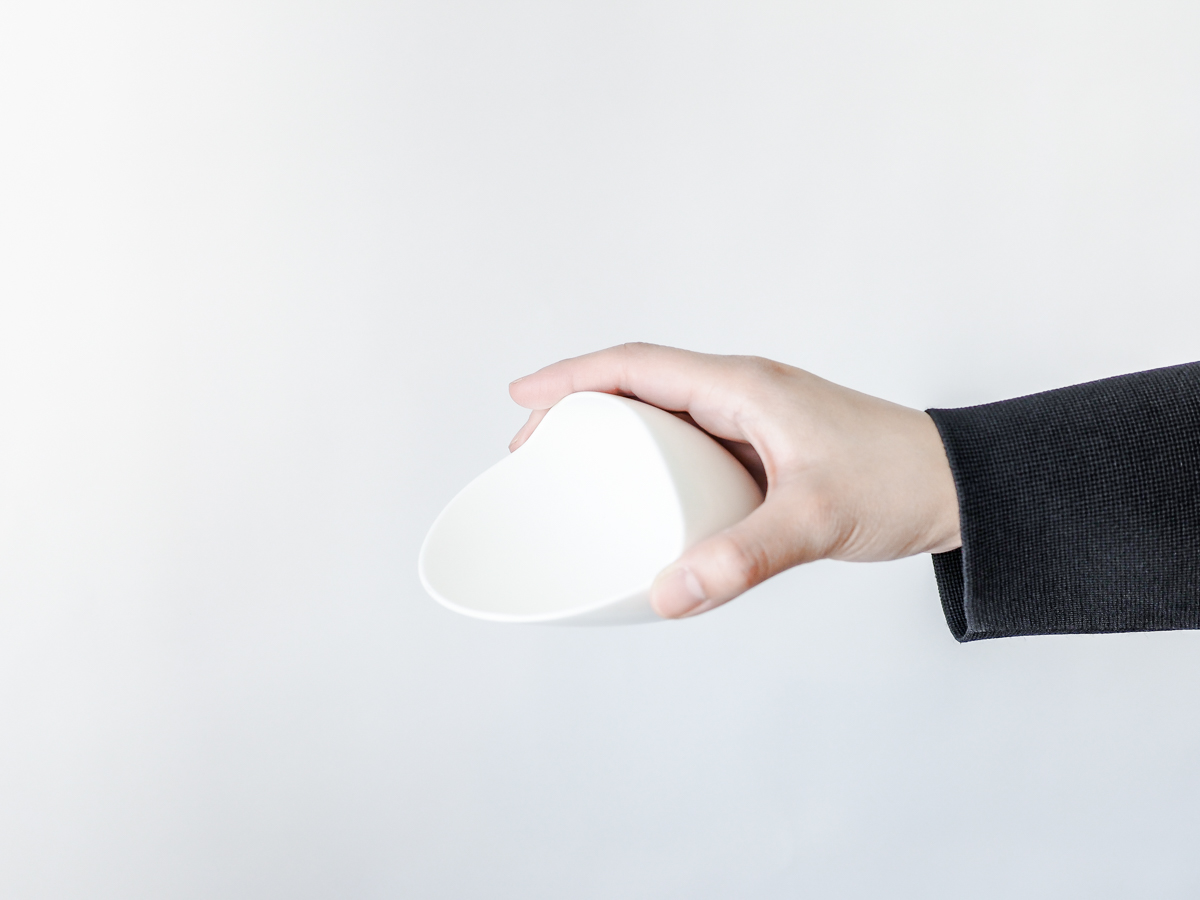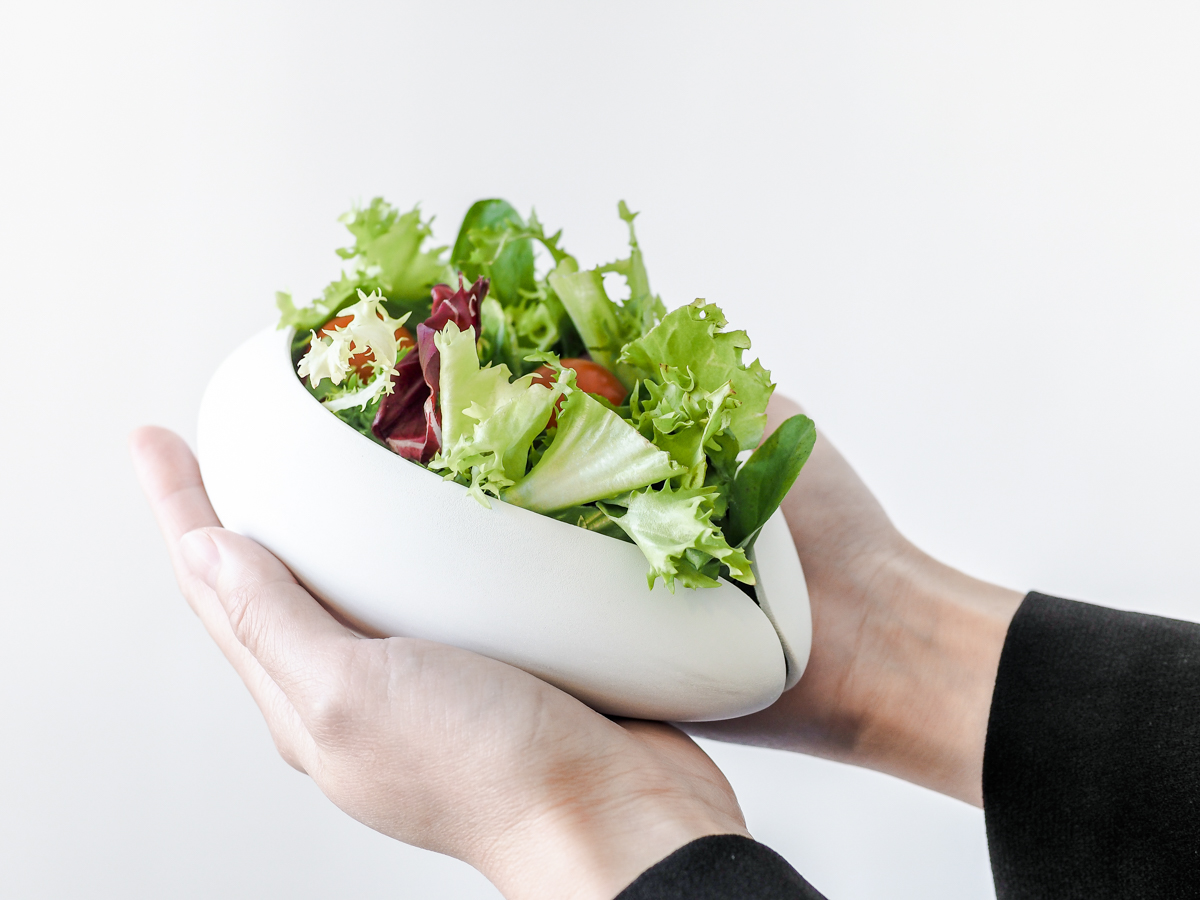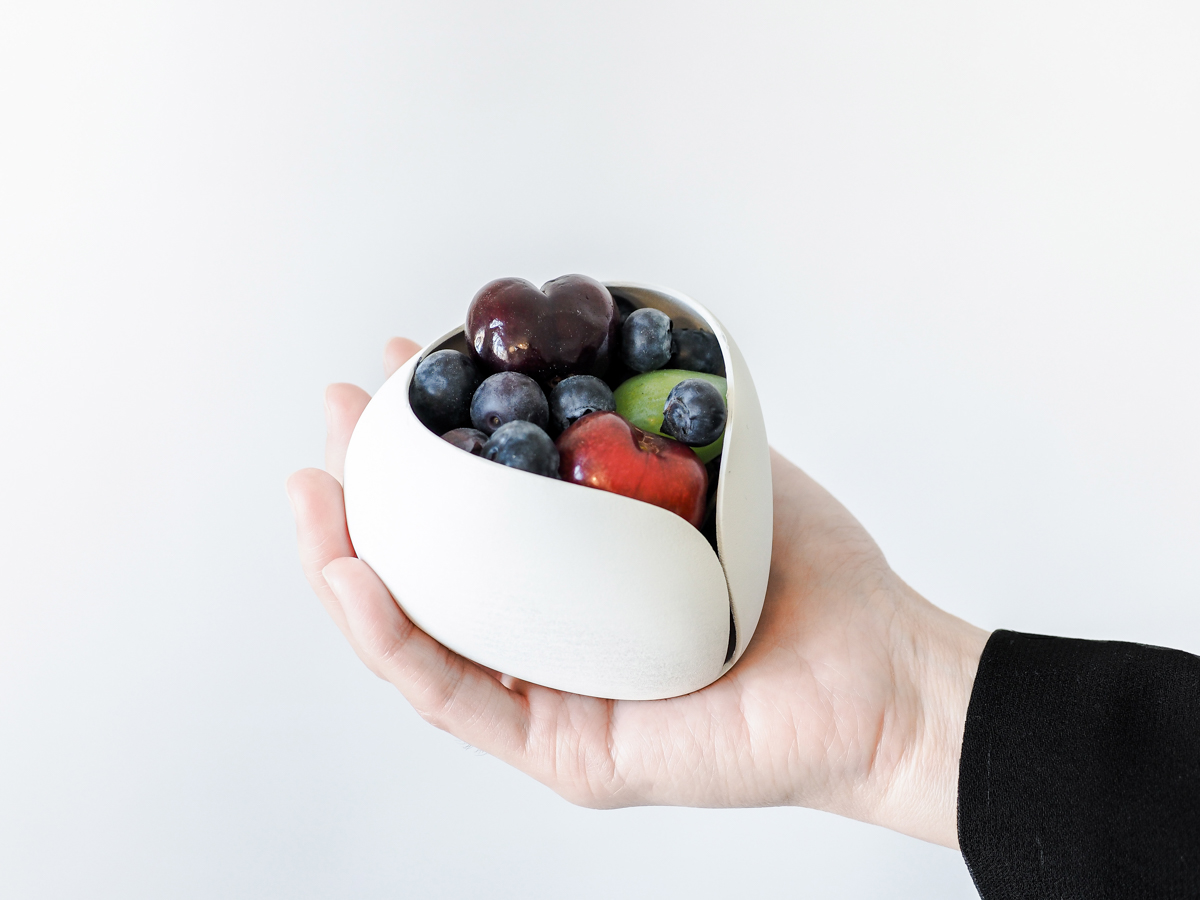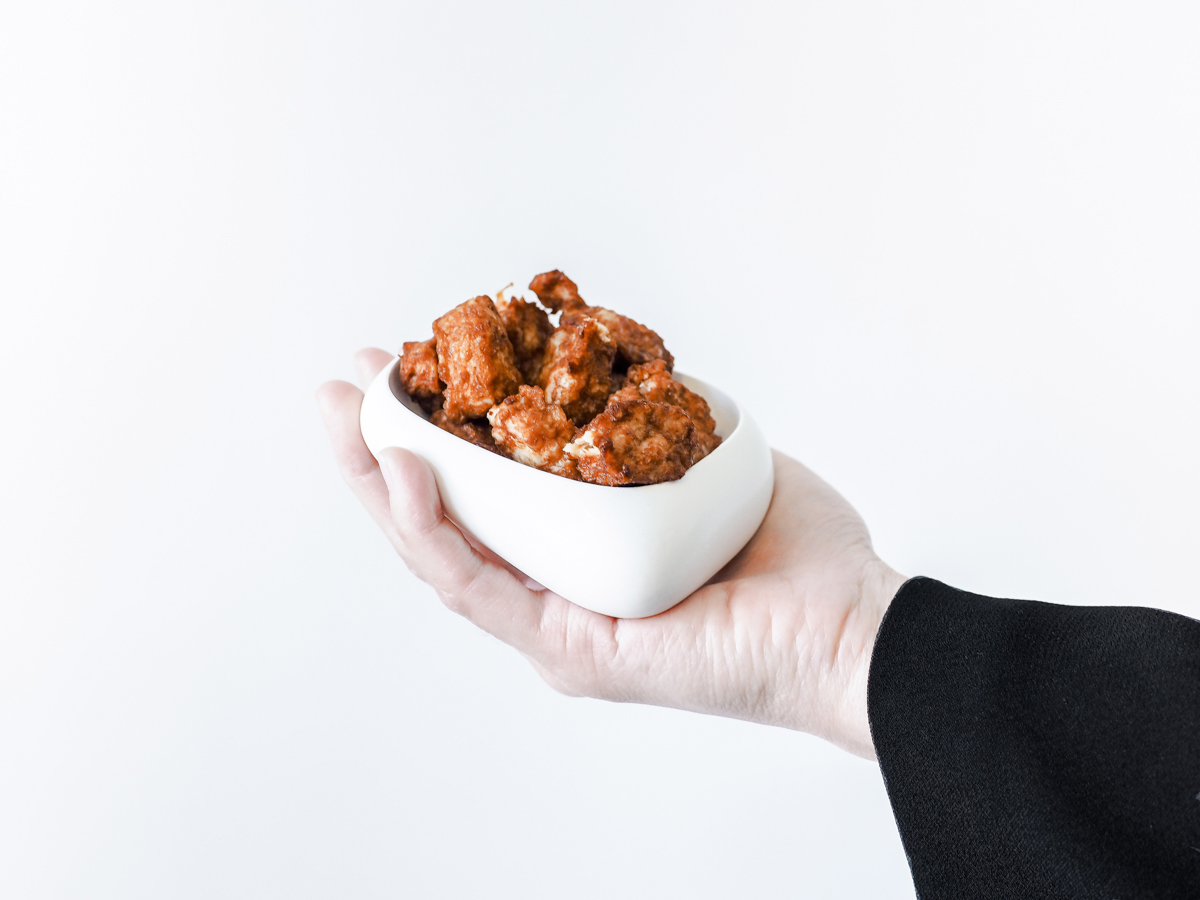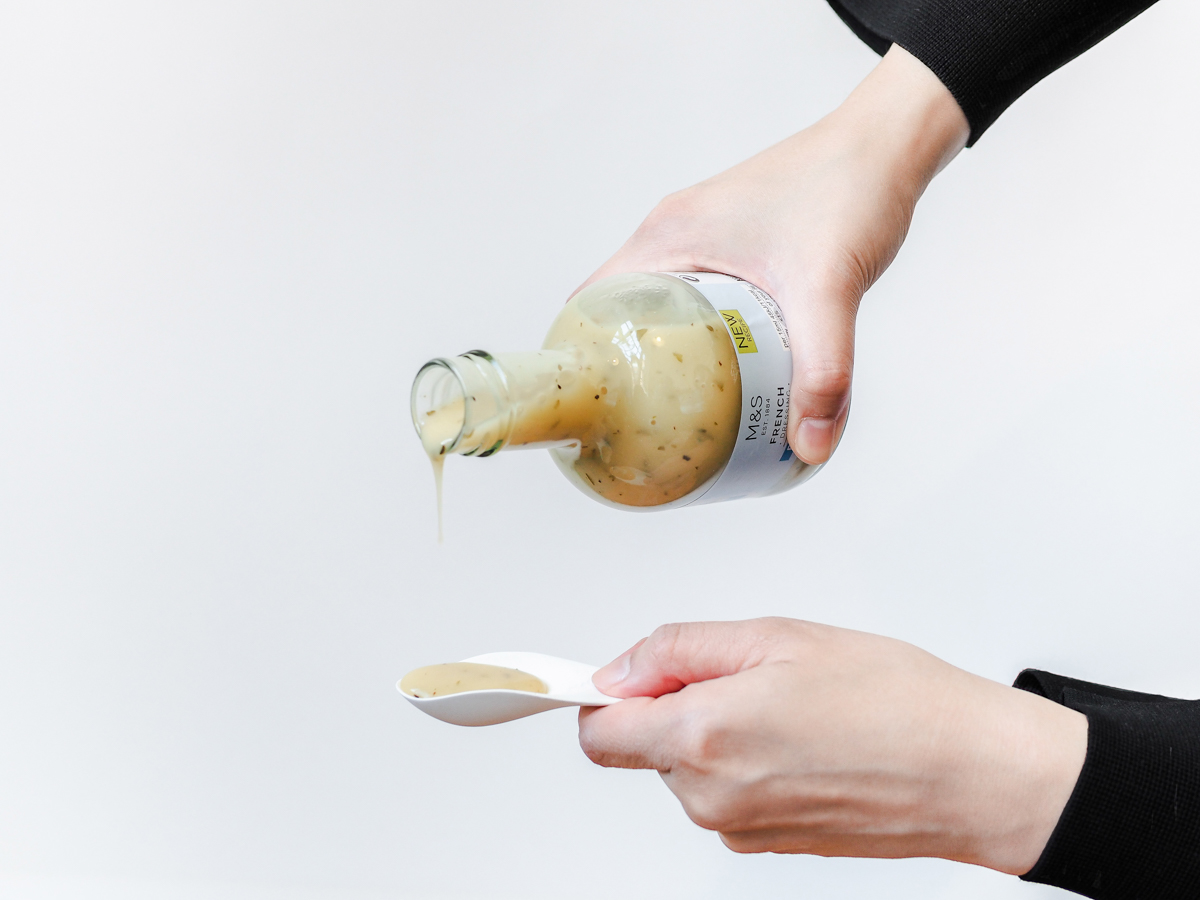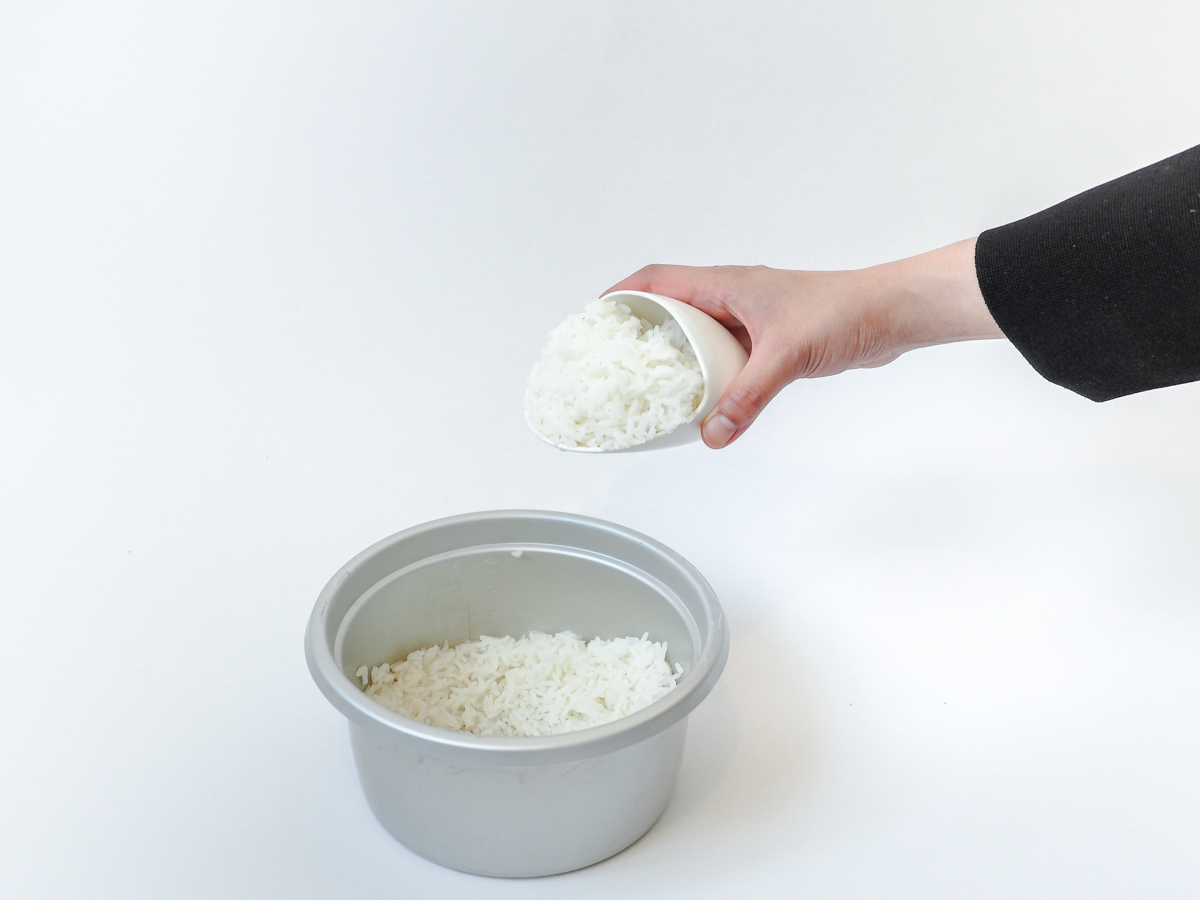Ponsawan Vuthisatkul introduces us to the new portions of healthy diets
Ponsawan Vuthisatkul has a curiosity for the origins of shapes and forms that she picked up when she was a student in the Faculty of Architecture at Chulalongkorn University and carried on with her when she continued to pursue her studies in product design at the Royal College of Art. Combining such with her personal preferences for design with a strong storytelling element and a Speculative Design approach, she created a thesis with content that delves into the portion distortion of the British people’s consumption behaviors titled ‘The New Normal,’ which she has materialized into a series of food serving utensils.
“World Health Organization (WHO) reported that 39% of the adult population around the world is overweight and 13% is obese, and the tendency is that the numbers will continue to rise,” Vuthisatkul told art4d as we began our conversation. She further explained that the main reason behind the obesity epidemic among the British population is the distorted portions of food people consume and the increase of a standard portion size per meal. Vuthisatkul’s wish with her project was to challenge humans’ perceptions regarding the portions of food they are eating to ultimately reshape consumption behaviors resulting in more appropriate and healthy portions.
The food serving utensil collection, ‘The New Normal’ proposes a new alternative for the portions of food one has at each meal. The concept uses the size and shape of human hands as references instead of calorie counting or mathematic calculations. The concept was initially applied following ideas garnered by nutritionists that compare food portions with the size of a human hand, for example, a fist of carbs, a palm of protein, a thumb of fat, a cupped hand of fruit, and two hands of vegetables. Nevertheless, after conducting research and experiments with actual people, Vuthisatkul realized that an understanding of the concept alone could not enable healthy consumption behaviors. She then designed a set of utensils using standard hand dimensions to create food serving tool sizes in XS/S/M/L/XL and also helped people to choose the appropriate size for their daily meals.
The utensils present a new approach to people’s purchases of food, similar to the way that they chose different sizes of clothing to wear while the connections between people and the food they consume become more personal. The result from the testing of the utensils with real users revealed that most people feel conflicted with the sizes that feel disproportioned with their own hands while the utensils also bring about a more discernible perception of food serving sizes, which could potentially lead to long-term changes.
Vuthisatkul admires Speculative Design, a genre of design practice proposed by Anthony Dunne and Fiona Raby. It refers to design as a means of speculating about how things could be, and to imagine possible futures instead of predicting or forecasting. With great openness to new possibilities, the process of speculative design begins with a ‘what if’ question, which brings about diversified discussions and offers something that is much more than one limited possibility. Vuthisatkul’s design principle is, therefore, questioning “how to deviate the physical appearances of everyday objects while maintaining their original functionalities.” It remains to be seen what other eating utensils will be materialized through her current interest in the creation of new eating experiences.
.
พรสวรรค์ วุฒิศาสตร์กุล พกเอาความสงสัยถึงที่มาที่ไปของรูปทรงต่างๆ ในงานออกแบบที่ค้างคาใจตั้งแต่ตอนเรียนอยู่ที่คณะสถาปัตยกรรมศาสตร์ จุฬาลงกรณ์มหาวิทยาลัย ติดตัวไปด้วยตอนที่เธอไปเรียนต่อด้านการออกแบบผลิตภัณฑ์ที่ Royal College of Art และเมื่อผสมกันกับความชอบในงานออกแบบที่มีเรื่องเล่าแข็งแรง กับแนวทางการออกแบบ Speculative Design เธอก็ผลิตวิทยานิพนธ์ที่มีประเด็นเกี่ยวข้องกับการบริโภคผิดสัดส่วนของชาวอังกฤษที่มีชื่อว่า The New Normal ขึ้นมาเป็นโปรเจ็คต์ชุดตวงวัดปริมาณอาหารสำหรับการกินในแต่ละครั้ง
“World Health Oraganisation (WHO) รายงานว่า 39% ของผู้ใหญ่ทั่วโลกมีน้ำหนักเกินมาตรฐาน และ 13% ในนั้นเป็นโรคอ้วน ซึ่งมีแนวโน้มที่จะเพิ่มจำนวนขึ้นเรื่อยๆ” พรสวรรค์บอกกับ art4d และกล่าวต่ออีกว่าเหตุผลหลักของปัญหาโรคอ้วนของชาวอังกฤษคือการบิดเบือนสัดส่วนอาหาร และการทำให้ portion “มาตรฐาน” ของการกินต่อครั้งมีปริมาณมากขึ้น ซึ่งเธอต้องการท้าทายการรับรู้ของมนุษย์ในเรื่องของปริมาณอาหาร อันจะมีผลในการสร้างพฤติกรรมการกินอาหารในปริมาณที่ดีต่อสุขภาพ
ชุดตวงวัดอาหาร The New Normal นำเสนอทางเลือกใหม่ในการกำหนดปริมาณการกินอาหารแต่ละอย่างและในแต่ละครั้ง ผ่านแนวคิดของการใช้ขนาดและกิริยาของมือเป็นสิ่งอ้างอิงแทนการนับปริมาณแคลอรี่หรือการวัดผ่านหน่วยต่างๆ ทางคณิตศาสตร์ แนวคิดนี้ริเริ่มมาจากแนวคิดของนักโภชนาการที่กล่าวว่า เราสามารถเปรียบวัดปริมาณอาหารได้จากขนาดมือของแต่ละคน เช่น แป้งหนึ่งกำ โปรตีนหนึ่งฝ่ามือ ผลไม้หนึ่งอุ้งมือ ผักสองแบมือ อย่างไรก็ตาม จากการค้นคว้าและทดลองกับผู้คน พรสวรรค์เห็นว่าลำพังแค่ความเข้าใจในแนวคิดที่ว่านั้นไม่เพียงพอที่จะสร้างให้เกิดพฤติกรรมในการกินเพื่อสุขภาพให้เกิดขึ้นได้ เธอจึงได้ออกแบบอุปกรณ์ที่จะช่วยสร้างประสบการณ์ในการประมาณอาหารทั้ง 5 หมู่ขึ้นมาใหม่ โดยการกำหนดขนาดมาตราฐานของภาชนะขึ้นมา 5 ขนาด (XS, S, M, L, XL) เพื่อความสะดวกในการปรับใช้กับความหลากหลายของคนกลุ่มใหญ่ สิ่งนี้จะทำให้เกิดแนวทางใหม่ การจับจ่ายเครื่องครัวจะกลายเป็นกิจกรรมที่คล้ายๆ กับการเลือกซื้อเสื้อผ้าไซส์ต่างๆ ซึ่งจะทำให้ความสัมพันธ์ระหว่างสิ่งของและผู้ใช้ดีขึ้น จากการทดสอบการใช้งาน ผู้คนส่วนใหญ่จะรู้สึกขัดข้องกับขนาดที่ไม่พอเหมาะกับมือของตัวเองและรับรู้ถึงสัดส่วนของอาหารได้ดีขึ้น ซึ่งนำไปสู่การปรับเปลี่ยนพฤติกรรมของการบริโภคอาหารในระยะยาว
พรสวรรค์ ชื่นชม Speculative Design ซึ่งเป็นแนวทางการออกแบบที่คิดค้นขึ้นโดย Anthony Dunne และ Fiona Raby ที่อาจพอแปลได้ว่า การออกแบบแบบจิตนาการคาดคะเน (ผู้เขียน) อันต่างจากการคาดการณ์แบบเก็งความเป็นไปได้ Speculative Design เปิดกว้างต่อความเป็นไปได้ด้วยการตั้งต้นการออกแบบด้วยคำว่า “แล้วถ้า” (what if) ที่ สร้างข้อถกเถียงถึงรูปแบบความเป็นไปได้ที่หลากหลายมากกว่าความเป็นไปได้ในทางเดียว หลักการทำงานออกแบบของเธอคือการตั้งคำถามว่า “จะทำยังไงให้สิ่งของที่ใช้ในชีวิตประจำวันมีหน้าตาที่ผิดแปลกออกไป ขณะยังคงหน้าที่การใช้งานไว้ได้อย่างเดิม” ต้องรอดูต่อไปว่า ความสนใจของเธอตอนนี้ที่กำลังมุ่งไปที่การสร้างประสบการณ์การกินอาหารแบบใหม่ จะนำไปสู่การออกแบบอุปกรณ์เครื่องใช้ที่เกี่ยวข้องกับการกินอาหารแบบไหนบ้าง
TEXT: SARNGSAN NA SOONTORN
PHOTO: PONSAWAN VUTHISATKUL
rca.ac.uk/students/ponsawan-vuthisatkul


